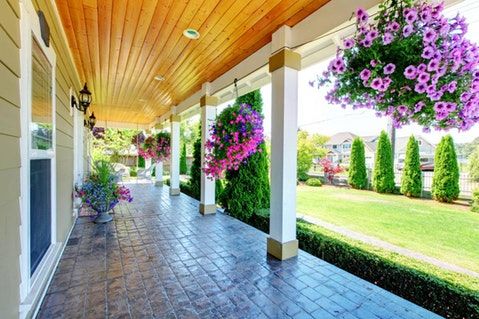Flood Insurance
We’ll shop and help you save on your Florida Flood insurance.
Flood Insurance
Since standard home insurance doesn't cover flooding, it's important to have protection from floods associated with hurricanes, tropical storms, heavy rains and other conditions that impact the U.S.
In 1968, Congress created the National Flood Insurance Program (NFIP) to help provide a means for property owners to financially protect themselves. The NFIP offers flood insurance to homeowners, renters, and business owners if their community participates in the NFIP. Participating communities agree to adopt and enforce ordinances that meet or exceed FEMA requirements to reduce the risk of flooding. Find out more about the NFIP and how it can help you protect yourself.
Why do I need Flood Insurance?
According to FEMA and national flood insurance program, flooding is the most common natural disaster in the United States, affecting every region and state, including Florida. No home in Florida is completely safe from potential flooding devastation—why risk it?
- Flooding that occurs during hurricanes is not covered under your homeowners policy; its covered under flood insurance policy.
- Flood damage is not typically covered by home insurance.
- It is more common for home to sustain flood damage than fire damage.
- The damage from just one inch of flood water can cost more than $20,000.
- 20% of flood damage occurs to properties located in low-risk zones, per FEMA.
- While there are low-risk flood areas, there is no such thing as a No-Risk Flood Zone.
Am I required to have Flood Insurance?
If you have a mortgage, your lender will require you to purchase flood insurance for your home when it is located in a high risk flood zone. You may not be forced to buy flood insurance when your home is in a low risk zone. We still think it is a good idea.
What does Florida Flood Insurance Cover?
Flood insurance (NIFP) protects two types of insurable property: building and contents. The first covers your building, the latter covers your possessions; neither covers the land they occupy.
Building coverage includes
- The insured building and its foundation
- The electrical and plumbing system
- Central air conditioning equipment, furnaces, and water heaters
- Refrigerators, cooking stoves, and built-in appliances such as dishwashers
- Permanently installed carpeting over unfinished flooring
Contents coverage includes
- Clothing, furniture, and electronic equipment
- Curtains
- Portable and window air conditioners
- Portable microwaves and dishwashers
- Carpeting that is not already included in property coverage
- Clothing washers and dryers
Flood Insurance DOES NOT cover:
- Flood insurance does not cover docks, swimming pools, or landscaping.
- If you are unable to live in your home after a flood, flood insurance does not pay for you to live somewhere else while your home is being repaired.
- Keep in mind that NFIP requires each structure on your property to have a separate flood insurance policy. so, if you have a detached mother in law suite, you need a second policy.
How Much Flood Insurance do I need?
You will want to purchase enough flood insurance to rebuild your home, but the NFIP program maxes out at $250,000. If your home costs more to rebuild than $250,000, you can purchase excess flood insurance through private insurance companies. This second or excess policy only pays once the flood damage costs more than $250,000 to repair. Just ask your insurance agent about this option.
How much does it cost?
The cost of a flood policy will be based how much insurance you need to cover your home, and what flood zone your home is located in. Read our blog article on "How much does Flood Insurance in Florida Cost?" It explains this question in more detail.
What is a Flood Zone?
FEMA (Federal Emergency Management Agency) has mapped the topography of Florida to show which communities and properties in Florida are most likely to sustain a flood within 100 years. FEMA assigned a letter ( X, B, C, A, V) to properties based the susceptibility to flooding. The letter assigned by FEMA is the Flood zone of a property.
How to Buy Florida Flood Insurance
You cannot buy flood insurance directly from NFIP or FEMA. To purchase a policy, you would need to contact an insurance agent. NFIP works through many different insurance agents and companies. No matter where you choose to purchase a NFIP policy, they will be identical in coverage and price.
Insurance companies in Florida participate in the NFIP’s program called “ Write your own” (WYO). The WYO program allow insurance companies to sell and service flood policies in their own name. However, the federal government underwrites and pays for claims for policies in the NFIP program. This is the most common type of Flood policy sold in Florida.
We would be happy to provide you a Florida Flood Insurance Quote, or feel free to give us a call.
Starting in 2017, insurance companies started selling private flood insurance. This means that they are not sold under the FEMA NFIP rules or pricing. These private market flood policies are priced differently that the NFIP Program. A company like Lloyds of London sells these policies through agents. When you buy flood insurance and NFIP program or the write your own policy, claims payment are guaranteed by the FEMA Federal Flood Program. If you purchase one from the private market, the claims payment abilities are subject to the financial stability of a particular insurance company.
How Does a Flood Insurance Policy Pay Claims?
The two most common reimbursement methods for flood claims are: Replacement Cost Value (RCV) and Actual Cash Value (ACV). RCV is the cost to replace damaged property. It is reimbursable to owners of single-family, primary residences insured to within 80% of the buildings replacement cost twho live in that property 80% of the time.
All other buildings and personal property (i.e. contents) are valued at ACV. Actual Cash Value is the replacement cost, minus depreciation. Personal property is always valued using ACV.
Payment Options availble for your Flood Policy.
The NFIP does not offer payment plans on a flood insurance policy. However, you can charge the cost to a credit card. Your mortgage company may escrow the cost and include it in your mortgage payment if they require the policy.
Reminder: 30 Day Wait Period
There is a 30-day waiting period between when you buy the coverage and when it starts. So, if you want flood insurance, don't wait to the last minute. Once a hurricane closes in on Florida, it’s too late to buy a flood policy.
Can I get disaster assistance after a Flood?
FACT: Most federal disaster assistance comes in the form of low-interest disaster loans from U.S. Small Business Administration (SBA) and you have to pay them back. FEMA offers disaster grants that don't need to be paid back, but this amount is often much less than what is needed to recover. A claim against your flood insurance policy could and often does, provide more funds for recovery than those you could qualify for from FEMA or the SBA--and you don't have to pay the money back. (source: www.floodsmart.gov)

 Get a
Get a 


